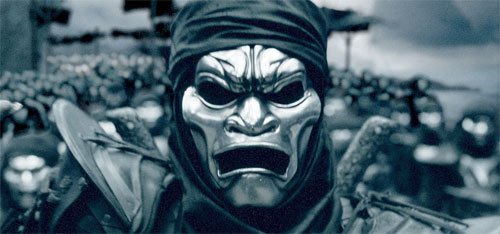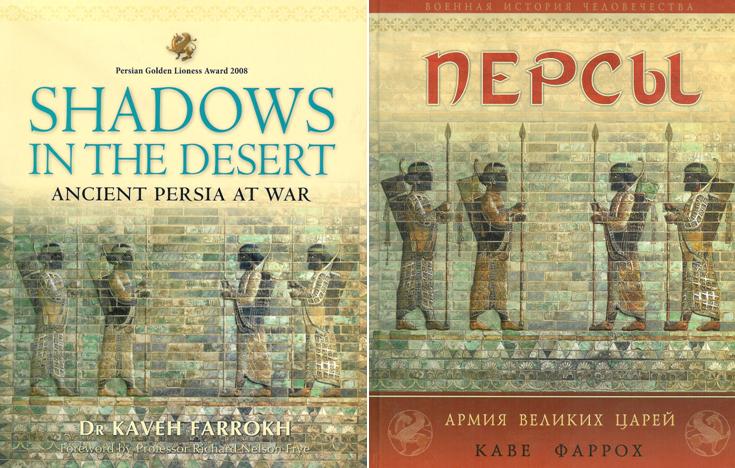A short and final point has to do with the portrayal of “the Persians” as “evil”. In one of the earlier scenes, King Leonidas holds a dying boy who, in reference to the invading host, states softly that the Persians “ … came from the blackness …”. It is very clear that “the Persians” are literally portrayed as “evil”.

A fantasy portrayal of Perisan Immortals in 300
The retort to this is that the movie is only faithfully reproducing the characters of a harmless comic book. But is it?
How would members of other ethnic communities worldwide feel if their ancestors were being portrayed as monsters, troglodytes, degenerates, and demons? These same producers would probably think twice if they were to portray other nationalities in the manner that they have done with the “Persians”. If my logic (flawed as it may be) is not mistaken, portraying Iranians as monsters, troglodytes, degenerates, and demons is “artistic entertainment”, but other nationalities are exempt from this “art form” as this would be “tasteless and politically incorrect” and would be regarded as a “hate crime”.
The targeting of specific ethnic groups with negative attributes in the name of entertainment dollars is dangerously misinformed and irresponsible. As noted earlier in this commentary, viewers and media outlets (especially in the English-speaking world) are already interpreting much of the movie in a “historical” light. The Greco-Persian wars evoke very intense emotions in northwest European culture, in some ways even more so than in modern-day Greece and Italy. The movie 300 has successfully capitalized on those very emotions in the quest for profit.
It is at this juncture of the discussion, where we must remind ourselves of one of Zoroaster’s chief teachings: Zoroaster taught that good and evil resides in all members of humanity, regardless of racial origin, ethnic membership or religious affiliation. Each person is given the choice between good and evil … it is up to us to choose between them.
==========================================================================
Having discussed the issues at length, it is hoped that the reader will appreciate the multifaceted and organic nature of human history. Nations, peoples and cultures have had a symbiotic relationship with one another through trade, cultural exchanges and war. It is these very processes that have shaped our identities and who we perceive ourselves to be today. As the size of our world diminishes daily due to the breathtaking leaps in technology and communications, it is all the more important to make the endeavor to understand history, not in terms of “east” versus “west”, but with the appreciation of human civilization being a collective.
==========================================================================
Dr. Kaveh Farrokh is the author of “Sassanian Cavalry” (Osprey Publishing, 2005). He has lectured at the University of British Columbia as well as Stanford University and has appeared on the History Channel as an expert on ancient Iran. Dr. Farrokh is currently a member of the Iran Linguistics Society, the Persian Gulf preservation Society as well as the WAIS (World Association of International Studies) at Stanford University. His new book, Shadows in the Desert: Ancient Persia at War-Персы: Армия великих царей-سایههای صحرا- by Osprey Publishing is to be released in late April 2007. Available to order here:

Shadows in the Desert Ancient Persia at War (at right – consult OspreyPublishing or Amazon.com) which has been translated to Russian (at left -consult the Russian EXMO Publishers website) and Persian.
Chapters:
- The Notion of Democracy and Human Rights
- What really led to War
- The Military Conflict: Separating Fact from Fiction
- The Error of Xerxes: The Burning of Athens
- The “West” battling against the “Mysticism” of “the East”
- The Portrayal of Iranians and Greeks
- A Note on the Iranian Women in Antiquity
- “Good” versus “Evil”
- Bibliography



